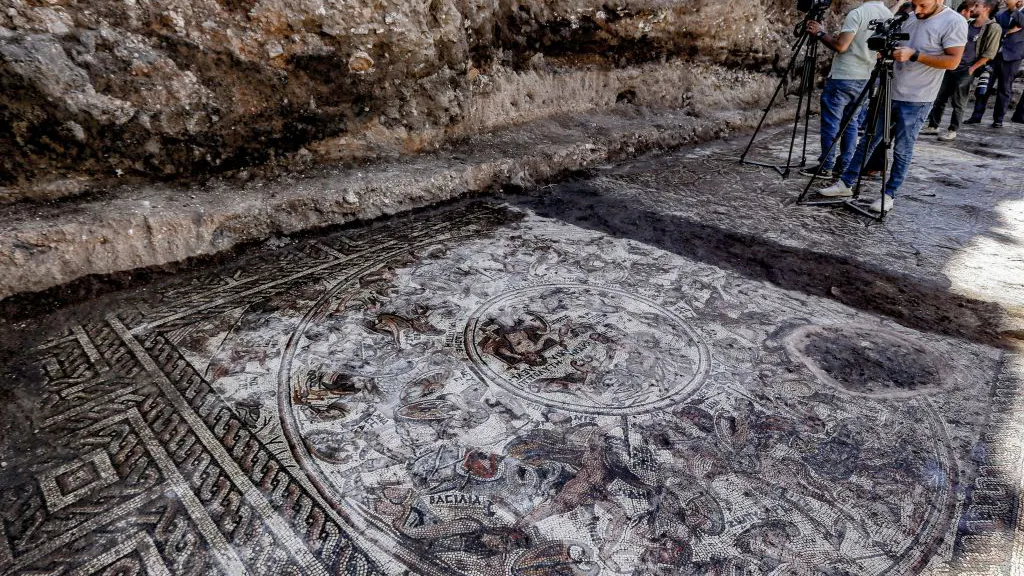A massive thousand-year-old mosaic depicting the Trojan War and mythological figures was unearthed by archeologists in the ruins of an ancient Syrian city this week.
Archeologists said that the mosaic, which spans roughly 1,300 square feet, is an incredibly “rare” find and they were surprised to find it so well preserved because of the Syrian Civil War.
“What is in front of us is a discovery that is rare on a global scale,” Dr. Humam Saad, the associate director of excavation and archaeological research at Syria’s General Directorate of Antiquities and Museum, told the Associated Press.

Photo by LOUAI BESHARA/AFP via Getty Images.
The mosaic, which was found in Rastan, shows scenes from the Trojan War, Amazon warriors, and the Roman sea god Neptune alongside 40 of his mistresses. The ancient artwork could be part of a bathhouse, but archaeologists are still uncertain.
“We can’t identify the type of the building, whether it’s a public bathhouse or something else, because we have not finished excavating yet,” Saad said.
The Trojan War was a legendary conflict that possibly happened over 3,000 years ago after Paris, a Trojan, ran away with Helen, the wife of Greek King Menelaus, igniting a ten-year siege of Troy and featuring figures like Achilles, Ajax, Hector, and Ulysses.
The Greeks were eventually able to conquer Troy because of the wiles of Odysseus, who devised a plan to smuggle in troops into the city through a large wooden horse designed to look like a sacrifice to a god.
Ancient academics, like Herodotus, the “Father of History,” and the mathematician Eratosthenes, have treated the Trojan War as a historical event, and there has been some archeological evidence to support the stories — mainly the discovery of Troy in 1870 by Heinrich Schliemann and Frank Calvert.
The depiction of the war found in Rastan dates back to Roman settlement of the area. In recent years, it became the target of Syrian rebels. According to Saad, one rebel group attempted to sell portions of the mosaic on the black market but were unsuccessful.
“Unfortunately, there were armed groups that tried to sell the mosaic at one point in 2017 and listed it on social media platforms,” he said.
https://t.co/cyKogq2Tbu Huge Roman Mosaic Depicting Trojan War Saved From Terrorists in Syria https://t.co/ALhKh3tV83 pic.twitter.com/u4NRJgv3kZ
— Billy Carson II (@4biddnKnowledge) October 14, 2022
Although some of the regions history has been destroyed by ISIS or rebel groups, some Syrians are hoping that the unveiling of the mosaic leads to more historical tourism and interest in the war-torn area.
“There are other buildings, and it’s clear that the mosaic extends far wider,” Sulaf Fawkherji, a trustee of the Nabu Museum and actress, told the AP. “Rastan historically is an important city, and it could possibly be very important heritage city for tourism.”

.png)
.png)

